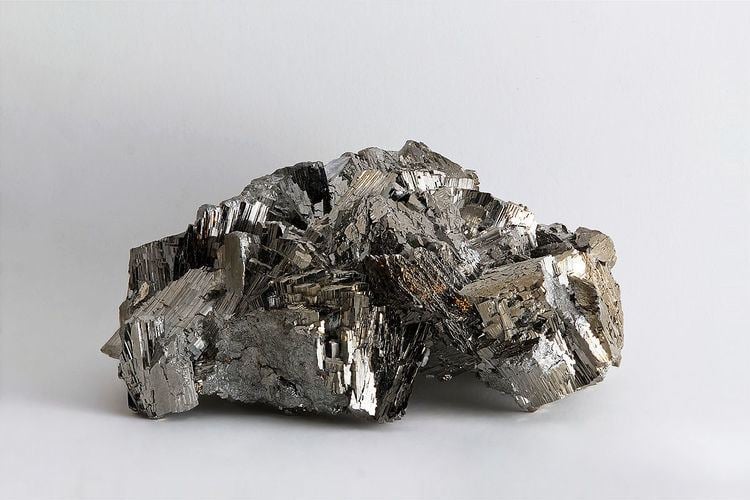Category Sulfide mineral Strunz classification 2.EB.20 Space group P21/c | Formula(repeating unit) FeAsS Crystal system Monoclinic | |
 | ||
Crystal class Prismatic (2/m)(same H-M symbol) | ||
Arsenopyrite is an iron arsenic sulfide (FeAsS). It is a hard (Mohs 5.5-6) metallic, opaque, steel grey to silver white mineral with a relatively high specific gravity of 6.1. When dissolved in nitric acid, it releases elemental sulfur. When arsenopyrite is heated, it becomes magnetic and gives off toxic fumes. With 46% arsenic content, arsenopyrite, along with orpiment, is a principal ore of arsenic. When deposits of arsenopyrite become exposed to the atmosphere, usually due to mining, the mineral will slowly oxidize, converting the arsenic into oxides that are more soluble in water, leading to acid mine drainage.
Contents
The crystal habit, hardness, density, and garlic odor when struck are diagnostic. Arsenopyrite in older literature may be referred to as mispickel, a name of German origin.
Arsenopyrite also can be associated with significant amounts of gold. Consequently, it serves as an indicator of gold bearing reefs. Many arsenopyrite gold ores are refractory, i.e. the gold is not easily liberated from the mineral matrix.
Arsenopyrite is found in high temperature hydrothermal veins, in pegmatites, and in areas of contact metamorphism or metasomatism.
Crystallography
Arsenopyrite crystallizes in the monoclinic crystal system and often shows prismatic crystal or columnar forms with striations and twinning common. Arsenopyrite may be referred to in older references as orthorhombic, but it has been shown to be monoclinic. In terms of its atomic structure, each Fe center is linked to three As atoms and three S atoms. The material can be described as Fe3+ with the diatomic trianion AsS3−. The connectivity of the atoms is more similar to that in marcasite than pyrite. The ion description is imperfect because the material is semiconducting and the Fe-As and Fe-S bonds are highly covalent.
Related minerals
Various transition group metals can substitute for iron in arsenopyrite. The arsenopyrite group includes the following rare minerals:
